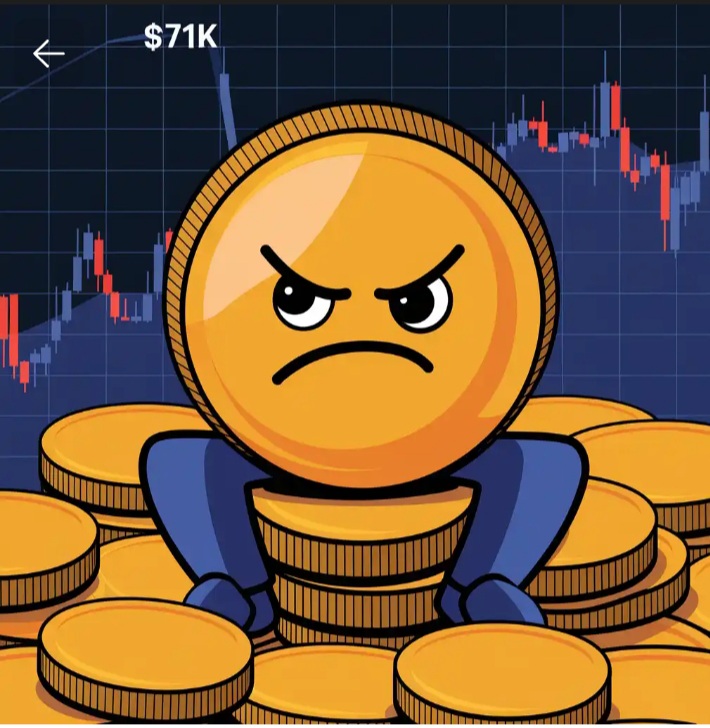Disclosure: This article does not represent investment advice. The content and materials featured on this page are for educational purposes only.
Bitcoin, the digital currency that’s had more ups and downs than a rollercoaster, is now facing a fresh challenge. New analysis is predicting that Bitcoin’s price could take a dive to $71,000 in the aftermath of President Donald Trump’s decision to impose worldwide trade tariffs. But before you panic and sell off your crypto stash, let’s take a closer look at what’s going on and why this might just be a buying opportunity in disguise.
What Happened With Bitcoin and the Trump Tariffs?
On April 2, President Trump made waves in the global markets by announcing reciprocal trade tariffs on imports. In simple terms, this means countries around the world could start charging the U.S. higher taxes on goods—something that often triggers a domino effect in the stock and currency markets. This time, Bitcoin didn’t escape the turbulence.
When Trump made the announcement, Bitcoin’s price took a hit, falling by as much as 8.5% in a single day. This might seem like a lot, but when you consider Bitcoin’s usual volatility, it’s almost like a Tuesday for BTC. Meanwhile, the S&P 500 index—usually considered the go-to measure of U.S. stock market health—managed to end the trading session 0.7% higher. It’s like Bitcoin took a hit to the chin, while the stock market just shook it off and carried on.
So, why does this matter for Bitcoin holders? Well, according to Charles Edwards, the founder of Capriole Investments, this tariff situation could signal some serious uncertainty in the market. In fact, Edwards believes that the U.S. business outlook is beginning to resemble those rare, high-risk economic moments we’ve seen only a few times in the last few decades. We’re talking about 2000, 2008, and 2022—three years that were less about good times and more about, well, economic chaos.
The Uncertainty Factor and What It Means for Bitcoin
Edwards pointed to a key indicator: the Philly Fed Business Outlook survey, which tracks the sentiment of U.S. businesses. The current survey results are showing expectations that are eerily similar to those seen at the turn of the millennium, the Great Recession, and the beginning of the post-pandemic economy. If that doesn’t send a chill down your spine, we don’t know what will.
The big takeaway here is that uncertainty is a powerful force, and when businesses start to expect harder times, they tend to act accordingly—by tightening their belts, cutting costs, and pulling back from risk. For Bitcoin, this kind of behavior can cause the price to drop, as investors shift to more stable assets.
But it’s not all doom and gloom! According to Edwards, even though these signals are concerning, they don’t necessarily predict an apocalypse. Instead, they should be viewed as a reminder to keep an open mind about where Bitcoin’s price could go in the near future. Remember, Bitcoin’s ability to bounce back is one of the reasons many investors are drawn to it in the first place. Edwards suggests that if the tariffs really do escalate, we could see Bitcoin’s price drop further, but there’s also a chance for a significant rebound—especially if the Federal Reserve (aka “the Fed”) steps in with new monetary policies.
Bitcoin’s Key Price Levels: $91K or Bust?
Now, here’s the interesting part. Even with all this uncertainty, Bitcoin has some key price levels that could guide us through the storm. According to Capriole’s latest market update, one price level that Bitcoin fans should keep an eye on is $91,000. Why? Well, if Bitcoin manages to close above $91K on a daily basis, it would send a powerful bullish signal, suggesting that the bears (aka the negative market forces) have been vanquished—at least for now.
Of course, we’re not saying that $91K is a magical number that guarantees a smooth ride to the moon. Bitcoin is still highly volatile, and things can change in the blink of an eye. However, a sustained push above this level would be a positive sign for those who think that Bitcoin still has plenty of room to grow.
So, if Bitcoin is feeling a little sluggish right now, a daily close above $91K could be just what the doctor ordered to restore investor confidence.
But don’t start planning your victory lap just yet. If Bitcoin fails to hit that $91K level, there’s a possibility that the price could fall into the $71K zone. Now, don’t get too alarmed—Edwards actually suggests that a drop to $71K might not be the worst thing that could happen. In fact, it could lead to a “sizable bounce,” meaning that Bitcoin might find support at this level and shoot back up. Think of it like hitting a trampoline after a dive—sometimes, a sharp drop leads to an even bigger rebound.
What Does the Future Hold for Bitcoin?
Now that we’ve talked about the short-term price action, let’s zoom out a bit and take a look at the bigger picture. The U.S. Federal Reserve, which controls the country’s monetary policy, has already begun loosening its tight financial stance. For those unfamiliar with central banking lingo, this means that the Fed is less focused on controlling inflation and is more willing to pump money into the economy to support growth. It’s the opposite of the “tightening” we saw over the past couple of years, when the Fed raised interest rates to combat inflation.
As a result of this shift, there are growing expectations that the Fed might soon return to something known as quantitative easing (QE). This is when the central bank essentially prints money and uses it to buy assets, which can lead to an influx of liquidity in the market. For Bitcoin, an influx of liquidity could be the fuel it needs to climb higher, as more money flows into riskier assets like cryptocurrency.
Analyst Colin Talks Crypto has suggested that the next wave of M2 money supply (which refers to the total amount of money circulating in the economy) could spark a BTC price rebound as early as May. This could create the conditions for a sustained rally, especially if the market’s macroeconomic trends continue to favor risk-on assets like Bitcoin.
The Bottom Line: Should You Be Worried About Bitcoin’s Price?
So, should you panic and sell off your Bitcoin holdings now that the U.S. is in the midst of a tariff showdown? Not necessarily. While the short-term outlook for Bitcoin might be a little bumpy due to the impact of these trade tariffs and rising uncertainty in the U.S. economy, there are still plenty of reasons to stay optimistic.
First of all, the price levels to watch—$91K and $71K—give us a roadmap for what could happen in the coming weeks. If Bitcoin can break above $91K, it could signal the start of a new bull market. On the other hand, if it drops to $71K, that could present a buying opportunity for those with a long-term vision.
Furthermore, the potential return of quantitative easing by the Federal Reserve and the expected influx of M2 money supply could provide the necessary liquidity to push Bitcoin’s price higher in the medium term. If you’re a Bitcoin holder, it’s important to remember that the cryptocurrency market has survived much worse situations in the past, and it’s likely to continue thriving as long as there’s demand for decentralized digital assets.
So, whether you’re a Bitcoin bull or a bear, just keep your seatbelt fastened and your eyes on the horizon. While the journey may be rocky, history shows that Bitcoin’s ability to rebound from adversity is one of its most defining features.
And if all else fails, just remember: this is crypto. Anything can happen. So buckle up and enjoy the ride!


